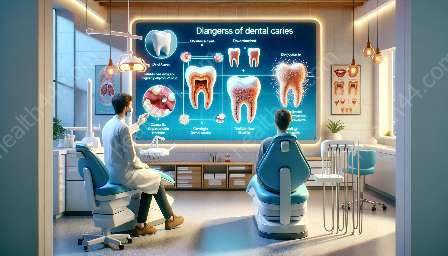Oral health disparities and inequalities can significantly impact individuals' attitudes toward seeking dental care and their overall oral health outcomes. In this topic cluster, we will explore the effects of poor oral health, the concept of oral health disparities, and how they influence individuals' access to dental care. Understanding these issues is crucial for addressing the challenges and barriers that many people face in maintaining good oral health.
Effects of Poor Oral Health
Poor oral health can have far-reaching consequences on individuals' overall well-being. Beyond impacting the health of teeth and gums, poor oral health has been linked to a variety of systemic health issues, including cardiovascular disease, diabetes, and adverse pregnancy outcomes. Additionally, it can lead to pain, discomfort, and a reduced quality of life. These effects can be exacerbated by disparities in access to dental care and healthcare resources, further perpetuating the cycle of poor oral health outcomes.
Understanding Oral Health Disparities and Inequalities
Oral health disparities refer to differences in the occurrence of oral diseases and the access to oral health care between different population groups. These disparities can be influenced by a variety of factors, including socioeconomic status, education level, ethnicity, and geographic location. Inequalities in oral health care can stem from a lack of access to preventive services, such as regular dental check-ups and cleanings, as well as barriers to receiving timely and appropriate treatment for oral health conditions.
Influence of Oral Health Disparities on Attitudes Toward Seeking Dental Care
Oral health disparities can significantly influence individuals' attitudes toward seeking dental care. For many people facing disparities in oral health, accessing dental care may be more challenging due to financial constraints, lack of insurance coverage, or limited awareness of available services. As a result, individuals may delay or forgo seeking dental care, leading to the exacerbation of oral health issues and the potential for more severe and costly interventions in the future.
Furthermore, cultural and linguistic barriers can also contribute to disparities in the utilization of dental services. Individuals from minority ethnic groups or non-English-speaking backgrounds may encounter challenges in finding culturally competent care and navigating the healthcare system, leading to decreased trust in seeking dental treatment.
Addressing Oral Health Disparities and Improving Access to Dental Care
Efforts to address oral health disparities and improve access to dental care are crucial for promoting equitable oral health outcomes. This includes initiatives to increase awareness of oral health issues, provide education on preventive dental care practices, and expand access to affordable dental services, particularly in underserved communities. Additionally, promoting diversity and cultural competency within the dental workforce can help bridge the gap in understanding and meeting the needs of diverse patient populations.
Conclusion
Oral health disparities play a significant role in influencing individuals' attitudes toward seeking dental care. Understanding the impact of these disparities, as well as the effects of poor oral health, is essential for developing targeted strategies to improve access to dental care and promote better oral health outcomes for all. By addressing these challenges and working towards eliminating inequalities in oral health, we can strive for a future where everyone has equal opportunities to maintain good oral health and access the dental care they need.



